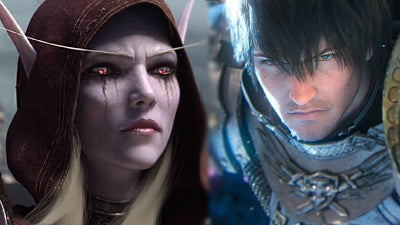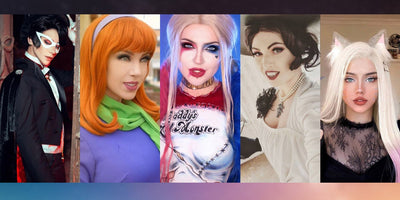First introduced in 1970 by Masahiro Mori, The Uncanny Valley is a term used to describe the uneasy or fearful response that people feel when things trying to represent humans such as robots, toys or animations are modeled to be as life like as possible but fall short of being convincing due to lack of missing, inconsistent or badly designed ‘off’ human-like features.
The Uncanny Valley Theory Explained
December 13, 2021
The Uncanny Valley Theory - Fear of the Near Familiar
Creepy dolls, bad animations, robots and androids - why do they make us feel uneasy?
(Left) Masahiro Mori's Uncanny Valley Chart. (Right) The Uncanny Valley chart further adapted with explinations and examples.
Whilst Mori’s essay Bukimi No Tani was first published in 1970, it wasn’t translated until 2012 which means that our interpretations of early ‘Uncanny Valley’ theory is misconstrued. Modern theorists have said that the theory title is confusing, rather than describing the uncanny, the theory may be more accurately described as how it gives people an ‘eerie’ feeling and that it isn’t solely based on ‘likeness’ but instead too on familiarity, combining both concepts to give a greater depth of explanation. Finally if we look at the Uncanny Valley graph, Mori put corpses at the bottom of the graph, which gives an insight into his mind - that we fear the Uncanny Valley because we associate it with death: just think how robots or animations are likened to having a ‘dead cold stare’ or being ‘soulless’.
The Uncanny Valley theory isn’t isolated to just facial animations or ‘looks’ however, it can be anything that impersonates human behavior such as language or how objects act/react. Here is a list of what the Uncanny Valley refers to (or most of):
- Robots
- Animatronics
- Androids
- Toys
- Decorative or Ornamental Pieces (Garden Gnomes and the like
- Virtual Characters
- Animated Characters
Note: The Uncanny Valley Theory specifically refers to objects or animations/movements; it does not cover the wider umbrella term of the ‘Uncanny’ which can be extended to the paranormal or environmental stimulus often attributed to horror movies and video games such as ghosts or the dark. Many people, as evidenced by search engine results, tend to lump the Uncanny Valley and the Uncanny together without understanding the nuance, so I hope this article is able to make the distinction clear! So without further ado, let’s abseil into the Uncanny Valley and find some of the greatest representations of Mori’s theory from a classic and modern perspective.
Language, Speech and Movement That Seems 'Other'
James Sunderland of Silent Hill 2 contemplating his own sanity.
Game: Silent Hill 2
Scene: Maria and James in the Labyrinth Prison Cell
Silent Hill 2 is a top-tier cult classic amongst Horror/Psychological Games and that’s due to how deep and unsettling it is, both from a Psychoanalysis and Uncanny Valley point of view. It’s hailed as one of the most frightening experiences to endure; playing on the human psyche in a way no other has managed. Obviously this comes as no surprise when you look into what inspired Silent Hill 2: Inland Empire (which I’ve unashamedly included in this article), Eraserhead, Jacobs Ladder, the Fog etc.
Themes of Uncanny Valley are prevalent throughout Silent Hill 2 but the one thing I want to focus on are how the characters interact, especially between protagonist James and antagonist Maria; their conversations are comprised entirely of prose rather than the flowery, poetic or descriptive language displayed in media or high production games. Their sentences are disjointed and Maria acts both warm and distant towards James like a Temptress, whilst James has a hard time explaining himself or understanding what Maria is or wants…or even if she is real at all. I’ve picked this scene in particular to explain the Uncanny Valley because it is the epitome of ‘eerie or off’ speech between two people giving the player a sense of uncomfortability and unease.
The Jaul scene is one of the most pivotal Silent Hill scenes, James appears to be talking to Maria through the bars...but doesn't James look like he's the one locked in?
Transcript:
James: “You’re alive, Maria, I thought that thing killed you, are you hurt bad?”
Maria: “Not at all silly”
James: “Maria? That thing, it stabbed you there was blood everywhere”
Maria: “Stabbed me? What do you mean”
James: “It chased us to the elevator and…”
Maria: “James what are you talking about?”
James: “Just before…don’t you remember”
Maria: “James honey, did something happen to you after we got separated in that long hallway? Are you confusing me with someone else. Ha you were always so forgetful remember that time in the hotel?”
James: “Maria?”
Maria: “You said you took everything, but you forgot that video tape we made, I wonder if it’s still there?”
James: “How do you know about that, aren’t you Maria?”
Maria: “I’m not your Mary”
James: “So you're Maria”
Maria: “I am…if you want me to be”
James: “All I want from you is an answer!”
Maria: “It doesn’t matter who I am, I’m here for you James…see I’m real. Don’t you want to touch me?”
James: “I…don’t know”
Maria: “Come and get me, I can’t do anything through these bars”
James: “Ok stay right there, I’ll be there soon”
By reading the transcript 3 themes become clear:
- James repeatedly asks if Maria is alive or if she is even Maria, despite her being right in front of him. Maria plays into this slightly by retorting that she is whoever James wants her to be.
- James is frantic about the fact that Maria is alive (in the game she gets killed just before this scene by Pyramid Head) and so when she plays it off as if it didn’t happen and that James is misremembering it.
- It’s important to note too that the Voice Actor for James - Guy Cihi - wasn’t a voice actor nor had any previous experience, creating a juxtaposition against Maria’s voice actor - Monica Horgan - who was an accomplished Voice Actress. This is pivotal to the portrayel of james because it adds an additional layer to the already disturbing and confusing exchange; James’ speech is stilted and awkward which is why when combined with all the points as explained so far, pushes this scene's dialogue into the Uncanny Valley and leaves players with a feeling of unease.
Picture 3: Discovered after 2 decades, players now see that James is looking at the player, breaking the fourth wall. This creeped me out to no end when this was posted on Twitter.
Film: Kairo
Scene: Ghost in Apartment
Movement emphasizes the descent into the Uncanny Valley in a very simple and subtle way. We’re not talking your typical fast-speed head jerking, levitating or anything else unworldly but the simple notion of someone starting a grin really slowly or simply alternating between slow and fast movements. What makes it Uncanny Valley is how unpredictable it is but also how the movements are obviously human but…un-human. People in real life unless emulating a dance or being particularly obtuse move in an unpredictable manner, we all move with purpose towards a destination or action.
Whilst Kairo has a goofy looking front cover, the film is well worth a watch.
Kairo is a cult classic techno-horror film whereby ghosts invade the world via the internet. It sounds crazy but the film is incredibly well shot and the story is captivating, the focal points of the film are the encounters, survival and the psychological horror. Whilst ghosts or the paranormal don’t feature in the Uncanny Valley, what does in particular is the movement of the Ghosts (actors) within this movie. In the scene I’m about to show you’ll see that the director takes a very simple concept of a woman walking and completely shatters any illusion of humanity by her random, sudden jittery movements - it should be noted that a professional ballerina was hired for this shot.
(Below) I would also recommend watching Spikima Movies' interpretation of the Kairo ghost as he very masterfully explains in more detail, elaborating on my points, why the scene is so terrifying.
This scene still gives me the absolute willies to this day.
Sophia the AI Robot
I feel like there should be another trigger warning here, because this gives me the absolute hibbie jibbies / willies. Sophia the AI Robot is created by David Hanson of Hanson Robotics although now she enjoys autonomy as a Citizen of Saudi Arabia. This in essence is what Mori based his theory on, as you can see from the below video there’s a plethora Sophia is the top echelon - or even the poster woman - of the Uncanny Valley:
I don't like the look of the future.
Let’s break down the elements as to what we are seeing here and what gives Sophia that eerie feeling:
Eyes: Soulless…the pupils barely move and even when they do they tend to twitch rather than ‘scan’, neither retracting nor dilating.
Mouth: The movement patterns don’t match the speech, her words come before her mouth moves and even when it does move it's stiff and constantly agape. The tongue is limp and lifeless.
Head: What I’m about to explain happens in a lot of video games. When listening to a conversation or not speaking, the head tends to jolt around rather than stay in one place, cock at the right time when a question is asked…nod in agreement or look at the floor and reposition when asking a difficult question or answering one. It’s the subtle nuances of positioning that Sophia fails at and by extension avatars in games. Not to mention that when she twists her neck, the skin gets stretched to unfathomable levels and great creases akin to the Grand Canyon form around her neck.
Arms: It’s a well known trope that Europeans tend to speak with their arms and hands; essentially expressionists. You can tell with a flick of a wrist or the internations of a finger position what someone's emotions are…but with Sophia there’s nothing…lifeless, hanging arms albeit for the odd raise as if slug has suddenly sprouted limbs and is contemplating their own ability.
Body: The last thing to add to the Uncanny Valley soup is how Sophia’s body jerks rapidly when trying to change position; humans don’t do this otherwise they’d put out their back at least 10 times a year. Quick movements in terms of psychology are interpreted as aggressive positioning: imagine if you were having a conversation and then someone without a second thought turned towards you, their entire body facing you, posturing. You’d ask yourself “What do they want, what have I done?”
Theory: Why Do We Fear the Uncanny Valley?
Giving examples of the Uncanny Valley doesn’t give the theory justice nor explain why we find these things eerie, below I’ve compiled a collection of theories I’ve spent umpteen amounts of time researching across the World Wide Web:
Mortality Salience
Robot’s elicit an innate fear of death and triggers defenses for coping with death's inevitability. A huge subconscious fear wired into us is that of being replaced, enslaved or annihilated. Simply, robots are not us and anything that isn’t ‘us’ we fear:
- A mechanism with a human façade and a mechanical interior plays on our subconscious fear that we are all just soulless machines.
- Androids in various states of mutilation, decapitation, or disassembly are reminiscent of a battlefield after a conflict and, as such, serve as a reminder of our mortality; this is true also to objects that appear human-like such as mannequins or dolls.
- Since most androids are copies of actual people, they are doppelgängers and may elicit a fear of being replaced, on the job, in a relationship, and so on. Doppelgänger’s also known as "double-walkers" or is a biologically unrelated look-alike, or a double, of a living person. In fiction and mythology, a doppelgänger is often portrayed as a ghostly or paranormal phenomenon and usually seen as a harbinger of bad luck. Other traditions and stories equate a doppelgänger with an evil twin. In modern times, the term twin stranger is occasionally used. The word "doppelgänger" is often used in a more general and neutral sense, and in slang, to describe any person who physically resembles another person.
- The jerky movements of androids and robots insinuate a loss of bodily control.
Pathogen Avoidance
Things that look ‘other’ may generate a cognitive response in-built in our subconscious that tells us we should avoid certain things or people to avoid catching sinister illnesses or defects ourselves. The more human-like something appears without being humans triggers us because:
- Defects indicate disease or a hidden illness.
- Human-looking organisms are more closely related to human beings genetically, and the probability of contracting disease-causing bacteria, viruses, and other parasites increases with genetic similarity.
- The visual anomalies of androids, robots, and other animated human characters cause reactions of alarm and revulsion, similar to corpses and visibly diseased individuals.
Violation of Human Norms
If an entity looks to emulate human characteristics and hosts few features - such as big caricature eyes - but is obviously nonhuman, its ‘human’ characteristics are noticeable, generating empathy and affection. However, if the entity looks almost human, the nonhuman characteristics are noticeable, giving the human viewer a sense of strangeness. In other words, a robot stuck inside the uncanny valley is no longer judged by the standards of a robot doing a passable job at pretending to be human, but is instead judged by the standards of a human doing a terrible job at acting like a normal person. This has been linked to perceptual uncertainty and the theory of predictive coding.
Religious Definition of Human Identity
If you’ve ever watched i-Robot or the Terminator, you’d understand the theme of humans battling with the moral quandary of creating AI Androids in the pursuit of progress…but at a cost. An example can be found in the theoretical framework of psychiatrist Irvin Yalom. Yalom explains that humans construct psychological defenses in order to avoid existential anxiety stemming from death. Specialness is one of these defenses which is the irrational belief that aging and death as central premises of life apply to all others but oneself. Seeing, experiencing and communication with ‘humanlike’ robots can be so rich and compelling that it challenges humans' notions of "specialness" and existential defenses, eliciting existential anxiety. This anxiety dates back thousands of years and the creation of human-like, but soulless, beings is often shown to be unwise as is seen with Necromancy or more pertinently, as with the stories of the golem in Judaism, whose absence of human empathy and spirit can lead to disaster however good the intentions of its creator.
Conflicting Perceptual Cues
Perceptual tension occurs when an individual perceives conflicting cues to category membership, such as when a humanoid figure moves like a robot, or has other visible robot features. This cognitive conflict is experienced as psychological discomfort (i.e., "eeriness"), much like the discomfort that is experienced with cognitive dissonance. This sounds like a lot of jargon and it is, but essentially it boils down to how human-like figures or humanoids move in an unhuman way, just as described at the beginning of this article in the Kairo example. Mathur and Reichling found that the time subjects took to gauge a robot face's human- or mechanical-resemblance peaked for faces deepest in the uncanny valley, suggesting that perceptually classifying these faces as "human" or "robot" posed a greater cognitive challenge. This is a extensive theory and spans decades of research that reaches far beyond the uncanny valley theory in an attempt to explain general human psychology.
Threat to Humans' Distinctiveness and Identity
Negative reactions toward very human-like robots can be related to how human-looking androids and robots can challenge the status quo on ‘what should a human look and behave like?’. Kaplan stated that these new machines challenge human uniqueness, pushing for a redefinition of humanness. Ferrari, Paladino and Jetten found that the increase of anthropomorphic appearance of a robot leads to an enhancement of threat to the human distinctiveness and identity. The more a robot resembles a real person, the more it represents a challenge to our social identity as human beings. This could be a reason too why people are so adverse to being copied or plagiarized, whether in an intellectual, academic sphere or culturally and socially - such as wearing the same clothes or copying the same mannerisms and behavior.
Mate Selection
In basic human psychology we are predetermined or ‘wired’ to mate with one another and as such we have developed a cognitive mechanism for avoiding ‘mates’ that have low fertility, poor hormonal health or ineffective immune systems based on physical features. We want mates that look like us in the general sense; androids and robots that try to emulate humans closely fail to look or be like us and therefore it elicits a response of repulsion and avoidance.



